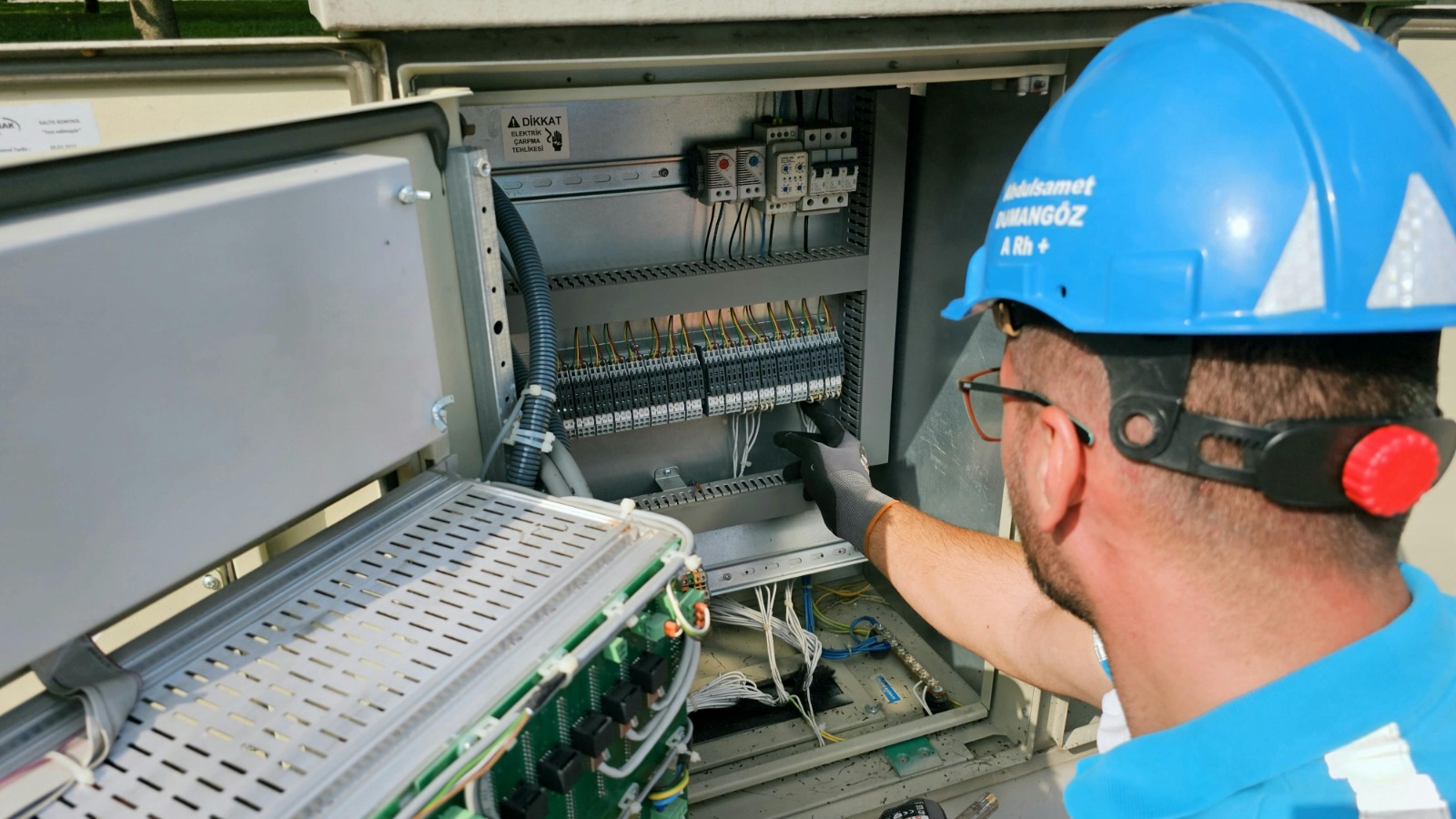Automation is a process in which human intervention is replaced. This means that machines are able to monitor the various processes and control the associated systems. This makes it possible to avoid errors, increase production efficiency and reduce the workload for employees.
Table of contents
- What is automation technology?
- What tasks do electricians perform in automation?
- Automation and artificial intelligence (AI)
- What is the difference between automation and artificial intelligence?
- What is automation and where is it used?
- What is artificial intelligence (AI) and how does it work?
- In which areas is AI used?
- What do automation and AI have in common?
- How did people work in the past without automation?
- What has changed in production with automation?
Estimated reading time: 14 minutes
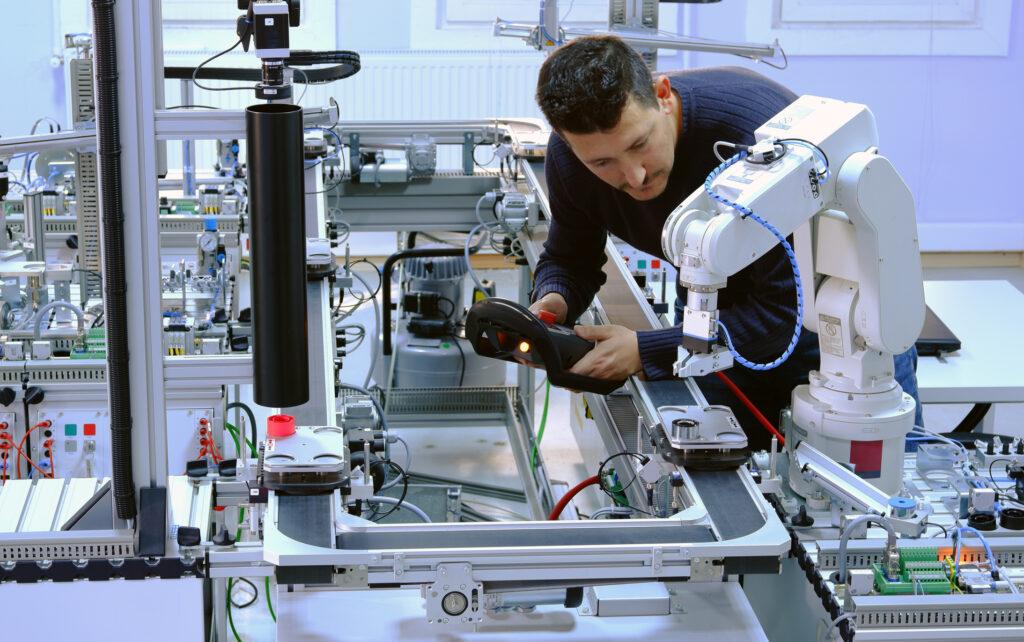
What is automation technology?
Automation technology is all the technology that is used to monitor and control production plants and other systems. This makes human operators superfluous. Automation technology is primarily used wherever a consistent process with the same quality is required for a large number of products.
Depending on the situation, environment, target and settings, the automation technology can function completely independently. It includes sensors and measurement technology. This is used to read the statuses and parameters and compare them with the specifications.
Then there is the control and regulation technology. This can react independently to the determined parameters and make settings on its own. This guarantees that the various processes within the system run smoothly.
Another component is the information and communication technology. This is used to connect the individual components of the system so that they can exchange information and transmit control impulses.
The final step is an interface between the human and the machine. This transmits information to the operator, who can then intervene to ensure error-free operation.
What tasks do electricians perform in automation?
Electricians are always needed in automation. They are responsible for enabling processes to run automatically. It is not only important that the machines work, but also that they fulfil their function without further direct input from human operators.
For the participating Electronics This means that they have to combine knowledge from different areas. This includes mechanical engineering as well as electrical engineering and knowledge from the IT area.
As part of their work, electricians analyse the existing systems and the processes that are to be carried out by them. Based on this analysis, they define measurement parameters that are suitable for assessing the functions of the system.
If the equipment is not yet available or the system is not yet complete, they are involved in developing an automation concept. This must be suitable for the intended processes and parameters are also needed for this, on the basis of which the system can be set up and later checked and adjusted.
What is needed for automation?
Automation requires its own hardware and software. Here too, electricians are involved in developing and manufacturing these. They also implement the projects and commission the systems. They then test the systems to see whether they are working properly and fulfil all specifications.
You create documents for the technical specifications and the operation and maintenance of the systems. They also carry out maintenance and repair work and, if necessary, rectify faults that occur during operation. The latter can even be carried out as an on-call electrician in an emergency.
There are three types of employers for electricians. These can be the manufacturers of the systems, the companies entrusted with the installation or the companies in which the systems are operated. In all three cases, concepts must be developed and implemented. The ordering company describes in its concept what it needs and how this can be realised in principle. The manufacturer builds the concepts for the entire system and its individual components on this. The installing company creates a concept for how the manufactured system can best be integrated into the ordering company's existing facilities.
However, automation goes even further. Automated production facilities are nothing new anymore and now the products themselves are also becoming increasingly automated. We already have autonomous driving and all kinds of assistance systems in vehicles that are not yet able to drive themselves. There are also other automation systems in building technology, for example, so that the areas of activity of electricians are expanding and the complexity of the work is constantly increasing.
Automation and artificial intelligence (AI)
In the course of automation, many technical terms often appear that can easily be misunderstood. Automation and AI are particularly often equated - but this is not correct. Although the two terms are closely related, a clear distinction should be made between them.
The distinction is important in that automation refers to an entire process, while AI is a component of it. The brain is an important part of the body and ensures its functionality. However, it is not the body in itself. This is also the case with AI and automation.
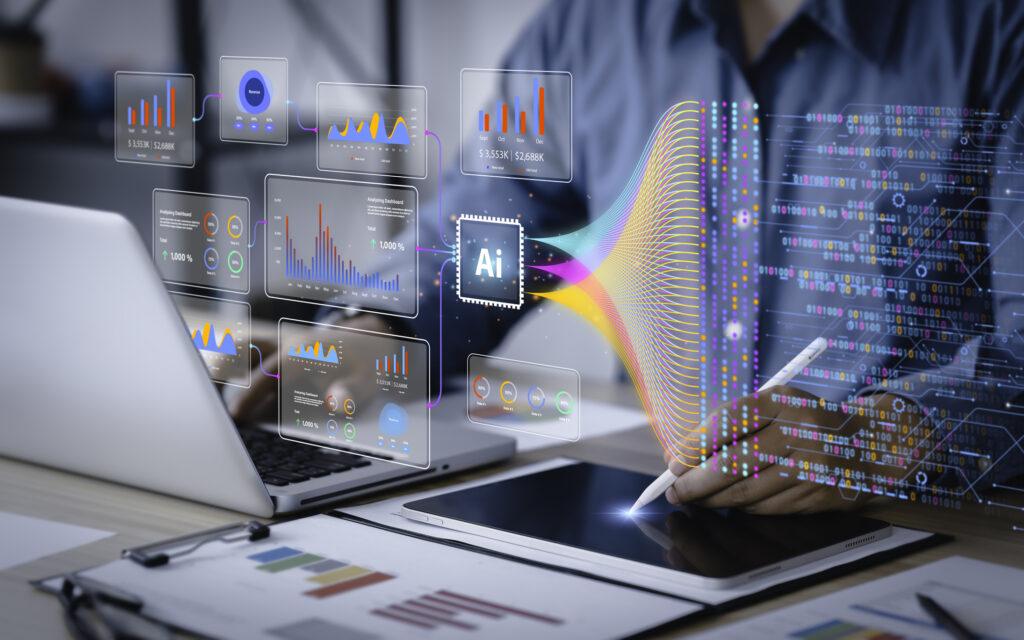
What is the difference between automation and artificial intelligence?
Let's first take a look at the simple facts that differentiate between AI and automation. Let's start with the basic term itself. Automation consists of processes that are controlled by predefined instructions and rules. AI, on the other hand, is focussed on learning and self-improvement based on experience.
- The tasks of automation are predictable and clearly formulated. The same processes are also repeated again and again. In AI, on the other hand, the tasks are unstructured. They are constantly changing and are correspondingly complex. This requires cognitive skills with which the AI reacts to new challenges.
- In automation, many control logic no decisions. Instead, it follows fixed rules that describe exactly what to do in which state or situation. AI, on the other hand, makes its own decisions using data and its own learning as a basis.
- Overall, automation is a rigid process. A production system is designed to continuously repeat the exact same production steps in exactly the same way. Changes are undesirable and the control logic has the task of avoiding them. AI, on the other hand, adapts to the situation and reacts to new challenges based on data.
- Automation relies on clearly predictable data, to which it reacts with structured and predefined responses. AI, on the other hand, processes unstructured data and interprets it.
- The goal of automation is standardisation, efficiency and producing exactly the same products in mass production. AI, on the other hand, is designed to support humans by imitating and even surpassing human thinking. For example, it works as a filter to answer specific search queries by providing the relevant knowledge.
What is automation and where is it used?
Automation follows predefined commands and controls the work of production systems. This increases accuracy, avoids errors, increases productivity - and improves overall efficiency. Hardware and software work together to achieve this. The software determines the reaction and the hardware executes the actions. Automation is practically a hard worker that carries out the same activities every day and produces exactly the same results with the utmost precision. From the self-service checkout to the assembly line, automation has long been an integral part of our everyday lives and we can no longer imagine life without it.
In fact, automation has already conquered many areas, including manufacturing. Here you will find various assembly line robots, for example in the production of cars. There are also systems for automatic packaging and labelling. Other applications are tools that are used in production and are controlled by computers.
- In daily life automation has also already become widespread. There are automatic systems for the payment of invoices. Thermostats automatically adjust the temperature of rooms and hoovers are already available as robots that diligently chase dust on their own.
- Also in the office and in the shop you can find examples of automation. There are systems that sort emails and even answer them automatically. The inventory in shops is now often also managed automatically. Then there is the software that takes care of automatic payroll accounting.
- The agriculture could not escape automation. Automatic irrigation systems work here. Tractors are controlled by GPS and the cows are milked using milking machines.
- Of course, the transport sector also has its share of automation. For example, aeroplanes have an autopilot. Underground trains and entire train systems are controlled automatically.
What is artificial intelligence (AI) and how does it work?
AI consists of computer systems that mimic human thinking and perform tasks that are normally reserved for humans. These include solving problems, recognising patterns, making decisions and understanding human languages.
AI systems simulate the cognitive functions of humans. This enables them to adapt to a new situation. Their performance increases over time because they have more experience and can therefore improve the analysis of the data.
In which areas is AI used?
AI can be found in other areas compared to automation:
- Healthcare: AI systems are able to analyse medical images and detect anomalies. They can also develop models to predict and spread diseases. They can also monitor patients and work as virtual care assistants.
- Finance: In the financial sector, AI works by adapting trading systems to different market conditions. It can assess the risks of loans before they are approved and it can recognise fraud by learning from patterns.
- Technology: AI is used as part of the technology by enabling self-driving cars. It can also process speech and thus deliver fast and precise results for search queries. The AI is also able to generate content for videos, images and texts.
- Customer service:In customer service, chatbots can understand complex questions and answer them correctly. Voice assistants can even hold natural conversations. They are also able to create personalised recommendations, for example for products.
- Entertainment:In entertainment, AI is able to create musical compositions. It can tell stories and shape the world in video games. It can also create personalised content recommendations, for example as part of streaming services.
- Education: In education AI can control tutoring systems. This makes it possible for AI to adapt to different learning styles. It can also assess essays and provide feedback on pronunciation in language apps.
- Production: AI can also be found in manufacturing. Here, it controls predictive maintenance systems that recognise errors before they become apparent in the processes. It can carry out quality control and ensure that products are flawless. It is also used in adaptive robotics, where flexible manufacturing processes are important.
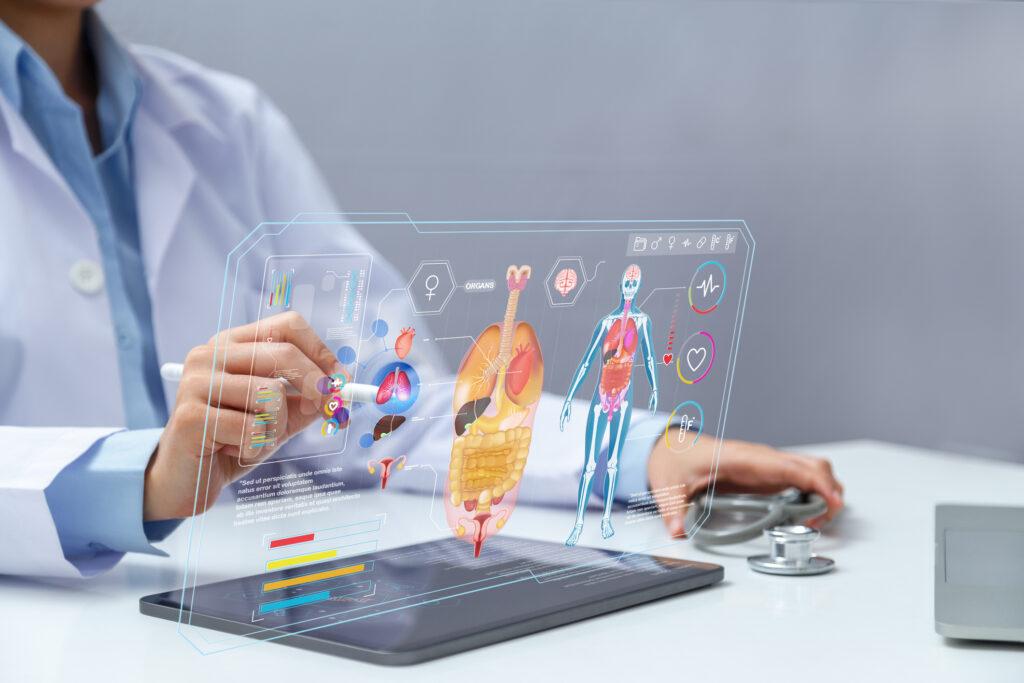
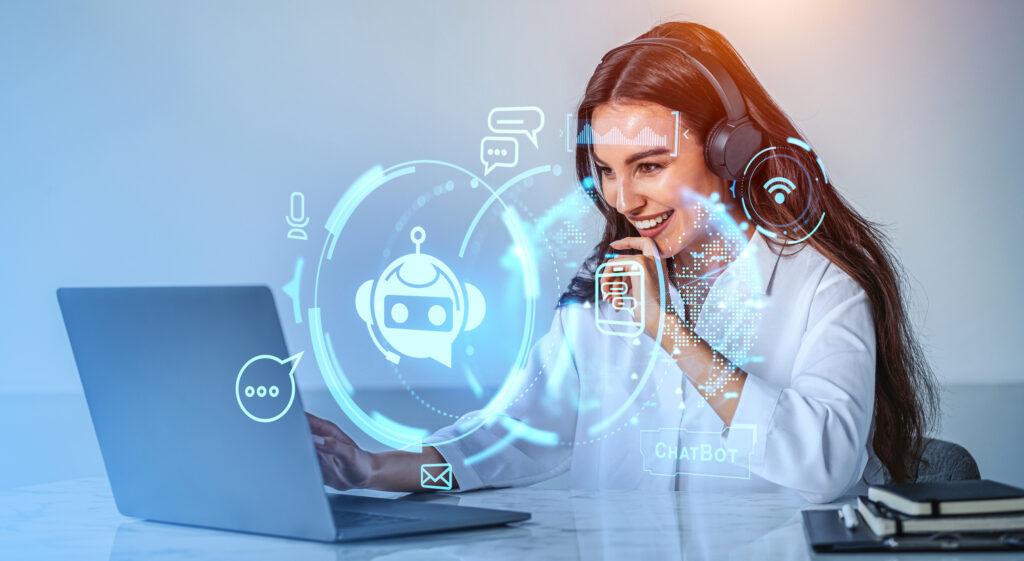
What do automation and AI have in common?
The boundaries between AI and automation are blurred. A good way to differentiate between the two is the skills required for their tasks. For automation, for example, it is important to follow predefined rules and instructions and to repeat the same processes with the same quality over and over again. For AI, on the other hand, it is important to learn and adapt to new situations.
In reality, automation and AI work together in their concept. Automation is intended to free up human labour by taking over routine mechanical tasks.
How did people work in the past without automation?
Take a look into the past. Back then, payroll accounting was carried out by a core of staff who calculated salaries and then paid them out accordingly. Today, this is done with far fewer employees, as computers take over the calculations and administration as well as the actual payment. This is automation.
Managers have been busy analysing the market. In the past, people collated data, sorted it according to weighting and significance and converted it into information. This information was then analysed and forecasts were made based on it. Decisions were made on the basis of these forecasts.
Today, AI takes over this process: it collects data, sorts and analyses it, converts it into usable information and uses it to create forecasts for the future. These forecasts lead to concrete decision-making options. Managers now access these options as well as the underlying information and data and choose the appropriate course of action.
What has changed in production with automation?
In all departments of a company, from production to accounting to marketing, automation has led to higher quality, fewer errors and a more efficient process with less labour. Subsequently, AI has led to higher quality, fewer errors and a more efficient process with fewer people involved in all management areas. Overall, the need for labour for certain tasks has therefore decreased, while quality and efficiency have increased at the same time. This is the basis for higher revenues, higher salaries for employees and better care for society. This also includes better healthcare systems and additional pension options, which we can afford thanks to higher incomes and growing tax revenues - both as individuals and as a society.
Concerns about rising unemployment due to the use of AI and automation are also unfounded. Provided the qualifications are right, skilled workers are still desperately sought after. New machines and AI systems need to be designed, developed, installed, maintained and continuously improved. The associated activities range from laying cables to working in IT development.
Conclusion
The aim of automation is to carry out repetitive processes without human intervention. Predefined rules and instructions are used to ensure consistent quality and a smooth process. This increases efficiency, reduces costs and frees up labour for other tasks.
Building on automation, AI has taken the next step and started to take over work in areas that are normally reserved for humans. This also increases efficiency, reduces costs and frees up labour for other tasks.
This opens up a wide range of professions for electricians. They are responsible for planning, manufacturing, installing, maintaining and, if necessary, upgrading automation systems in companies. Their expertise is also in demand as products become increasingly automated.
Electricians are also in demand in the field of AI. The computer systems on which AI applications run also need to be planned, built, installed, set up, maintained and upgraded as required.
Related topics:
